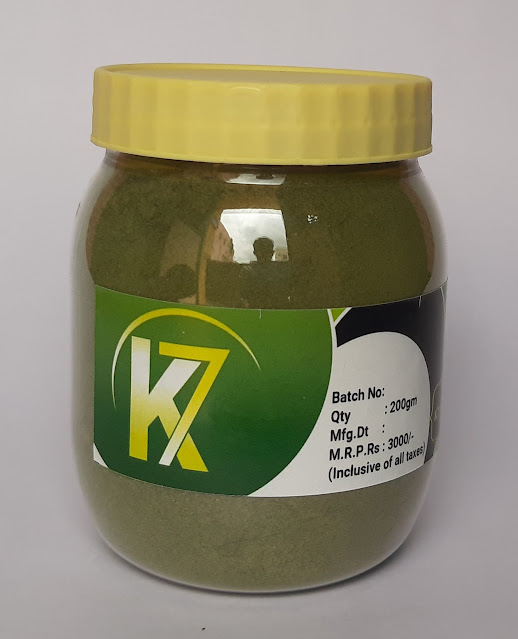Cocculus Hirsutus
Kattukodi (Cocculus Hirsutus)
Patalgaruni, Broom Creeper, Jal jamani are few common names of medicinal herb Cocculus hirsutus. This medicinal plant is used from time immemorial for the treatment of various diseases across India, Africa and China. In various parts of India, tribal and rural population still use this herb for the treatment of gynaecological problems, weakness and bleeding disorders.
In Rajasthan cooked leaves are eaten to treat night blindness. For spermatogenesis, the leaves are soaked in water to prepare jelly which is eaten. In Kenya, the infusion of leaves is given to treat stomach ache. In Tanzania, the leaves decoction is indicated in female infertility.
Medicinal uses
For the medicinal purpose mainly the aqueous extract of leaves is used. The leaves contain high amount of mucilage consisting of polysaccharides and a gelatinous type of material which is not absorbed in the gastro intestinal tract and passes through the system undigested. When the leaves are soaked in water in fresh or dry form, they coagulates water to form jelly which has cooling effect on the body. Due to this property, aqueous extract of leaves is indicated in the treatment of diseases which are caused to excess body heat such as bleeding from nose, bleeding from uterus, leucorrhoea, etc.
In Ayurveda, the plant are considered Tridoshashamak. The oral intake of the plant kindles digestive fire, improves digestion and the evacuation of bowels.
The plant roots have bitter and acrid taste. These have laxative, thermo genic, digestive, carminative (prevent and expel gas), aphrodisiac, expectorant tonic and fever reducing properties. The roots are indicated in deranged vata and kapha/mucous, skin diseases, indigestion, gas, colic, gout, spermatorrhoea, high blood pressure, weakness, etc. The leaves are mucilaginous due to which water is required for their juice extraction. They have cooling effect on body and are useful in female disorders, general weakness, skin diseases, etc.
Below is given few medicinal uses of medicinal plant Jal jamni/ Patalgarudi/Broom Creeper.
Tiredness, weakness
Eating raw fresh leaves gives relief in tiredness.
Leucorrhoea (Shwet Pradar), Menorrhagia and Metrorrhagia (Known as Rakta Pradara in Ayurveda), Urinary infections due to excess body heat
Leucorrhoea is gynaecological condition characterised by whitish or yellowish discharge of mucus from the vagina. Menorrhagia (meno: of menstruation + -rrhagia: excessive flow) is the term used for abnormally long and heavy flow of blood in monthly periods and Metrorrhagia (metro: womb + -rrhagia: excessive flow) is uterine bleeding at irregular intervals.
For the treatment of these diseases take clean fresh leaves (5-10 gram) and ground them adding some water to extract juice. In this juice add Misri/sugar candy and black pepper powder. Add water to make it one cup and take two times a day. Take regularly for a few days.
Treating Weakness, Using as a tonic
Take leaves (5-10 gram) and ground them to extract juice. Add some water and drink regularly for two weeks.
Increasing body weight gain, Improving body strength
Drinking leaves juice with water encourages weight gain and strength.
Burning urination, Shorter duration of menstruation, Irregularity of periods
Drinking juice of leaves is helpful in curing these diseases.
Spermatorrhoea
Prepare powder of dried leaves and branches. Take this powder in a dose of 3 grams with misri.
Epistaxis or bleeding from nose (Nakseer)
Prepare powder of leaves and take in a dose of 1-2 grams two times a day.
Eczema, Skin itching
The leaf juice is applied externally on the affected body part.
Chronic wound, all types of wounds and boils
Apply fresh aqueous extract of leaves for quick healing.
Need Cocculus Hirsutus, Contact:
Available in 3 Forms
Green Leaves, Dried Leaves, Fine Powder
| Hindi (20) : | bajar bel, bajar-bel, chhirenta, chireta, dier, farid-butti, faridburti, hier, jalayamani, jaljamni, jamti-ki-bel, jamtikibel, khareta-ki-bel, patalagarudi, til dhara, vev-no-velo, faridbel, jamti-ka-patta, jamti-ke-bel, jamtike bel |
| Kannada (18) : | aadama balli, adambuballi, daagadiballi, dagadi balli, dagadiballi, dhagadi balli, doosari balli, dusare balli, dusari balli, dusariballi, kaage maari, sugadi balli, sugadiballi, sugadigida, yadaniballi, yagadi balli, yudaani balli, dagadi |
| Malayalam (1) : | patalagarudakkoti |
| Marathi (12) : | diar, hunder, paathalagarudi, paravel, parvel, tan, tana, vasan-vel, vasanavela, vasanvel, vatsadani, wasan |
| Persian (1) : | faridbutti |
| Sanskrit (24) : | akabhida, chchilihinda, chilahinta, chilihindah, chilihinta, dirghakanda, dirghavalli, dridhakanda, dridhalata, garudi, mahahala, mahamula, patalagaruda, patalagarudah, patalagarudi, sauparni, somavalli, tiktanga, vanatiktika, vasandi, vasantitikta, vatsadani, jaliamni, vasanavalli |
| Tamil (46) : | anantavalli, calakattu, calapasani, carpatci 1, ciriya-katukkoti, cirukaikkoti, cirukattukoti, cutarcaracam, eluccikkoti, kalini 1, kalinikkoti, kaliniyam 1, kanakavacciratti, kattu-k-koti, kattukkodi, kattukkoti, kattukodi, ketuvacakkoti, ketuvacam, kolim, koticci 1, kotippavai, kotippavaikkoti, kottukodi, malaiccurukkay, malaikkaru, mattakajakkoti, mekanatattimuli, mekanati, mekanatikkoti, nirppanti, nirppantikkoti, perkkaci, perkkacikkoti, ticaikkarutankoti, tucari, uppaittiricci, uppirkuruti, utiritam, utiritankoti, utitaniratti, vacipputu, val, kattuk-kodi, periya kattukkoti, siru-kattukodi |
| Telugu (23) : | cheepurutheega, chipurutige, doosaratheege, dusara tiga, dusaraputiga, dusaratiga, dusaritige, dusedithige, katla tiga, katlathige, katlatige, shipri, chipuru-tige, cipurutige, dasaritega, doosaritheega, doosratiga, dusapi, dusaratige, dusari-tige, katle-tige, katletiga, kattle-ti |
| Urdu (1) : | faridbutti |


